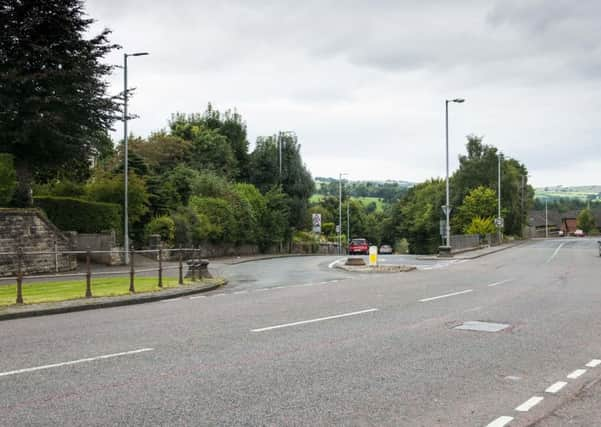Traffic lights for busy Lanark junction


Generations of drivers have been frustrated by delays at the point where the main A73 Carluke-to-Lanark route meets the A72 Clyde Valley road at the top of Kirkfieldbank Brae.
The roads authority, South Lanarkshire Council, had considered a mini-roundabout at the junction as a solution but rejected it because of the uneven traffic flows meeting there, the A73 being far busier than the A72.
Advertisement
Hide AdAdvertisement
Hide AdThe only answer, the council has decided, is traffic lights, and they will be going up as soon as funding is secured by the council from the Strathclyde Parnership for Transport.
Major traffic jams caused when temporary lights are in use there during repeated utility works at or near the cross have been rejected as a legitimate objection as permanent lights would have more sophisticated timing sequences designed to aid rather than hinder traffic flow.
The Gazette understands that some residents with driveways leading onto the road around Steels Cross have severe worries about the impact the new lights will have on their access to and from the main road.
To try to quell their fears, the council has written to them with a detailed explanation of why itl has opted for this solution.
Advertisement
Hide AdAdvertisement
Hide AdThe letter from the council’s roads engineering department says: “Our assessment of traffic signals identifies that the junction capacity would improve when compared to the current priority junction arrangement and any roundabout option.
“Therefore, this is the option considered to be the most practical, particularly when compared to other forms of junction control.
“It is intended to install a system called microprocessor-optimised vehicle actuation, which allows the signal timings to vary depending on the actual flows at the junction.
“Each approach lane will have detection equipment that will count the volume of traffic as it approaches the junction, and the equipment within the signal controller changes the green time given to each vehicle stage within each cycle.”
The lights, the letter claims, will also make it safer for pedestrians to cross the junction. Installation of the lights is expected within the next few months.